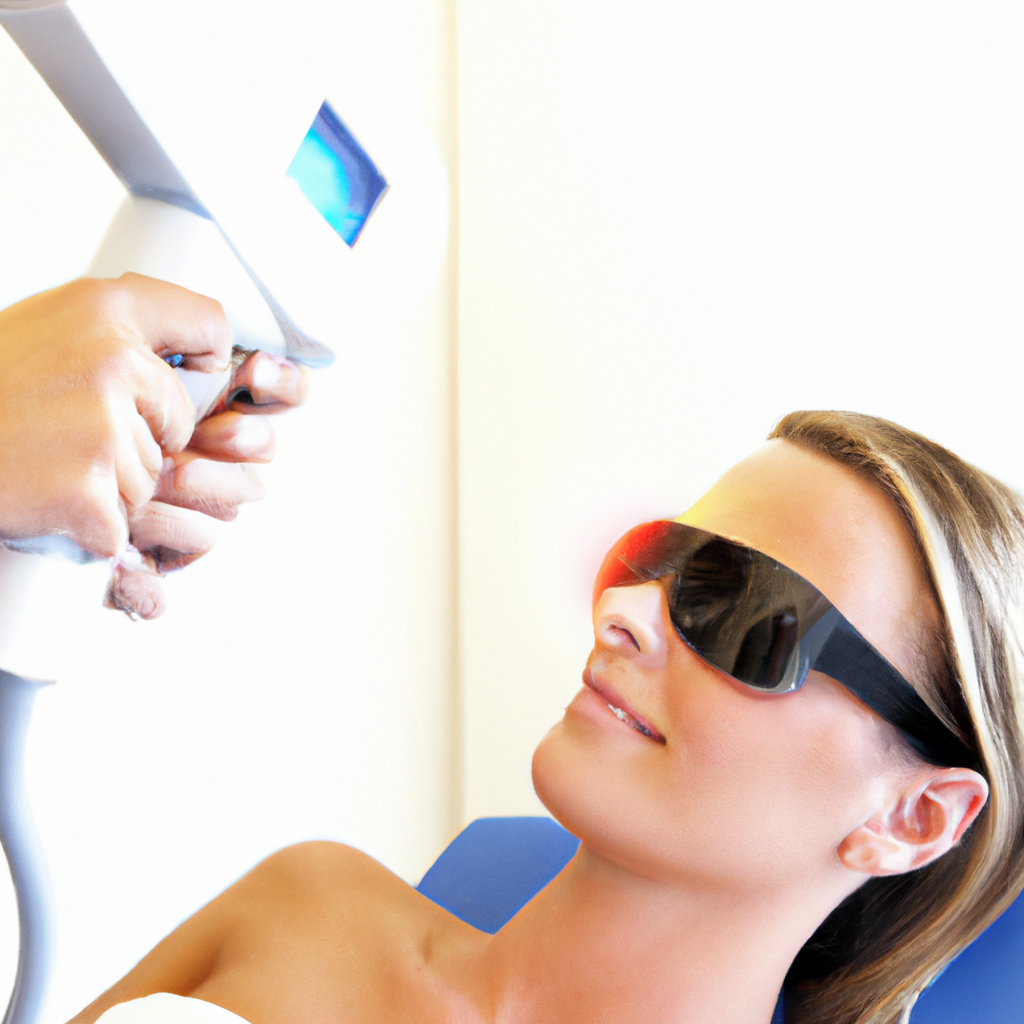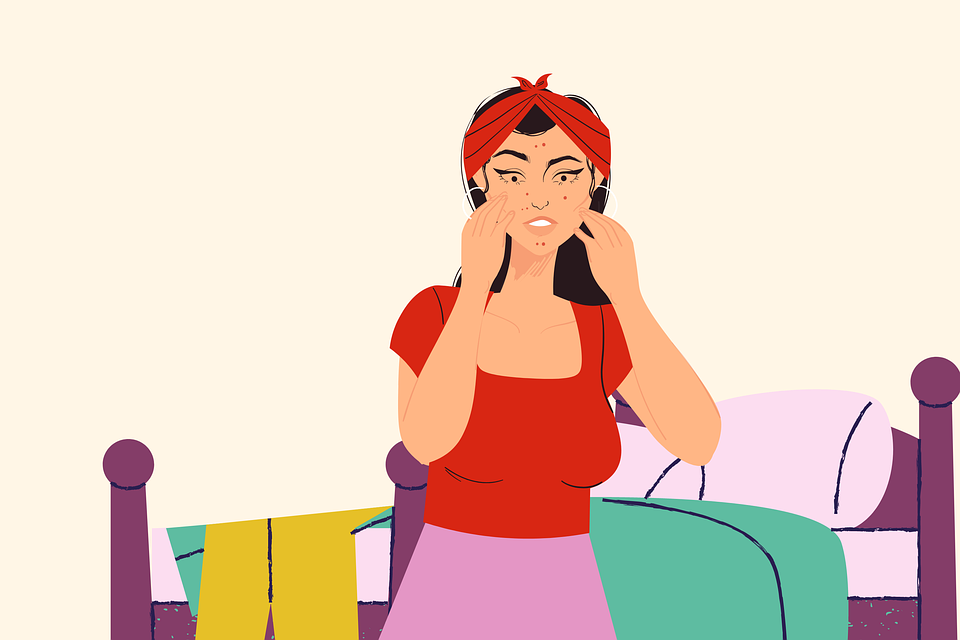Laser therapy has become an increasingly popular and effective method for treating various skin concerns. Whether you’re dealing with acne, scars, pigmentation issues, or unwanted hair, laser therapy offers a non-invasive solution that can provide remarkable results.
This article will explore the benefits of laser therapy for common skin concerns and discuss the different types of laser treatments available.
What is Laser Therapy?
Laser therapy, also known as laser resurfacing or laser treatment, is a medical procedure that uses focused beams of light to target specific areas of the skin. It delivers intense energy to the skin, stimulating collagen production and promoting skin cell regeneration. Laser therapy can address many skin concerns, making it a versatile and popular option for many seeking skin rejuvenations.
Benefits of Laser Therapy for Skin Concerns
1. Acne Treatment
Acne is a common skin condition that affects people of all ages. Laser therapy can be an effective treatment option for acne, especially for individuals who have not responded well to other conventional treatments. The laser targets the bacteria responsible for acne breakouts, reducing inflammation and promoting healing existing acne lesions. Additionally, laser therapy can help minimize the appearance of acne scars.
2. Scar Reduction
Scars can be a source of self-consciousness for many people. Laser therapy offers an excellent solution for scar reduction. By targeting the scar tissue, laser treatment promotes the growth of new, healthy skin cells, reducing the visibility of scars. Depending on the type and severity of the scar, multiple laser sessions may be required to achieve the desired results.
3. Skin Rejuvenation
Skin rejuvenation is a popular application of laser therapy. Our skin naturally loses elasticity and develops wrinkles and fine lines as we age. Laser resurfacing can help stimulate collagen production, tighten the skin, and reduce the appearance of wrinkles. It can also improve skin texture and tone, giving the skin a more youthful and refreshed appearance.
4. Pigmentation Correction
Uneven skin tone and pigmentation issues can be effectively addressed with laser therapy. The laser targets the melanin in the skin, breaking down the excess pigmentation and reducing the appearance of dark spots, age spots, and sunspots. In addition, laser treatment can provide a more even and balanced complexion, giving individuals a boost in confidence.
5. Hair Removal
Unwanted hair can be a nuisance and may require constant maintenance. Laser hair removal offers a long-term solution for reducing unwanted hair growth. The laser energy targets the hair follicles, damaging them and inhibiting future hair growth. Laser hair removal can be performed on various body areas, including the face, legs, underarms, and bikini line.
How Laser Therapy Works
Laser therapy works by emitting focused beams of light that specific chromophores absorb in the skin. The absorbed energy is converted into heat, which targets and treats the skin concern. The wavelength and intensity of the laser can be adjusted depending on the specific condition being treated. This precision allows for accurate and effective treatment while minimizing damage to the surrounding tissues.
Types of Laser Treatments for Skin Concerns
Different laser treatments are available, each designed to address specific skin concerns. Here are three common types of laser treatments used for skin rejuvenation:
1. Fractional Laser
Fractional laser treatment is a popular choice for improving skin texture and reducing the appearance of scars, wrinkles, and age spots. It works by creating microscopic injuries in the skin, stimulating the natural healing process and collagen production. Fractional laser treatment can be customized based on the individual’s skin condition and desired outcomes.
2. Intense Pulsed Light (IPL)
Intense Pulsed Light, or IPL, utilizes broad-spectrum light to target various skin concerns. It can effectively treat pigmentation issues, including sunspots, freckles, and vascular lesions. In addition, IPL treatments are non-invasive and can significantly improve skin tone and texture with minimal downtime.
3. Nd: YAG Laser
YAG laser treatment is commonly used for hair removal and vascular lesions. It can safely and effectively target darker skin types and is suitable for individuals with tanned or darker skin tones. Nd: YAG laser treatment offers long-lasting hair reduction and can be performed on larger areas of the body.
Considerations Before Undergoing Laser Therapy
Before undergoing laser therapy, there are several important considerations to remember to ensure optimal results and minimize risks.
1. Consultation with a Dermatologist
It is crucial to consult with a dermatologist or a qualified skincare professional before undergoing laser therapy. They will assess your skin condition, discuss your goals, and recommend the most suitable laser treatment for your concerns. Then, a personalized treatment plan will be created to address your unique needs.
2. Skin Type and Sensitivity
Different laser treatments may be more effective for certain skin types and conditions. For example, fair-skinned individuals may respond differently to laser therapy than those with darker skin tones. Your dermatologist will consider your skin type and sensitivity to determine your appropriate laser treatment parameters.
3. Pre-treatment Preparations
Before your laser therapy session, your dermatologist may provide specific instructions to prepare your skin. This may include avoiding sun exposure, discontinuing certain skincare products, or refraining from waxing or plucking hair in the treatment area. Following these instructions will ensure optimal results and reduce the risk of complications. |
4. Post-treatment Care
After laser therapy, your skin may be more sensitive and require special care. Your dermatologist will provide post-treatment instructions, including applying soothing creams or ointments, avoiding excessive sun exposure, and using sunscreen regularly. Proper post-treatment care is essential for minimizing side effects and promoting optimal healing.
Common Side Effects and Risks
While laser therapy is generally safe, there are some potential side effects and risks to be aware of. These can include temporary redness, swelling, itching, and mild discomfort immediately after the treatment. In addition, more severe complications such as burns, scarring, or skin discolouration may occur in rare cases. However, the risks can be significantly minimised with proper consultation, treatment planning, and skilled practitioners.
Conclusion
Laser therapy offers an effective and versatile solution for treating common skin concerns. Whether you’re looking to address acne, scars, pigmentation issues, signs of aging, or unwanted hair, laser treatments can provide remarkable results with minimal downtime. However, consulting with a qualified dermatologist and carefully following pre- and post-treatment instructions is essential to ensure optimal outcomes and minimize risks.
FAQs
1. Is laser therapy painful?
Laser therapy is generally well-tolerated, and discomfort during the procedure is usually minimal. However, individual pain tolerance may vary, and some individuals may experience mild discomfort or a warming sensation during the treatment. Topical anesthesia may be applied to the skin before the procedure to minimize any potential discomfort.
2. How many laser therapy sessions are needed?
The number of laser therapy sessions required will depend on the specific skin concern being treated and individual factors such as skin type and desired outcomes. Some individuals may achieve their desired results after a single session, while others may require multiple treatments spaced several weeks apart for optimal results.
3. Are the results of laser therapy permanent?
The results of laser therapy can be long-lasting, but they are not always permanent. Some skin concerns, such as acne or unwanted hair, may require maintenance sessions to sustain the results over time. Therefore, discussing the expected duration of results with your dermatologist during the consultation is important.
4. Can laser therapy be performed on any skin type?
Laser therapy can be performed on various skin types, including fair, medium, and dark skin tones. However, different laser technologies and treatment parameters may be used to ensure safety and efficacy for individuals with darker skin. Therefore, consulting with a skilled dermatologist experienced in treating diverse skin types is crucial.
5. Is there any downtime after laser therapy?
The downtime after laser therapy will depend on the specific treatment performed and individual healing response. Some individuals may experience temporary redness, swelling, or mild peeling, which typically resolve within a few days to a week. Your dermatologist will provide detailed post-treatment care instructions to help minimize downtime and ensure optimal healing.


